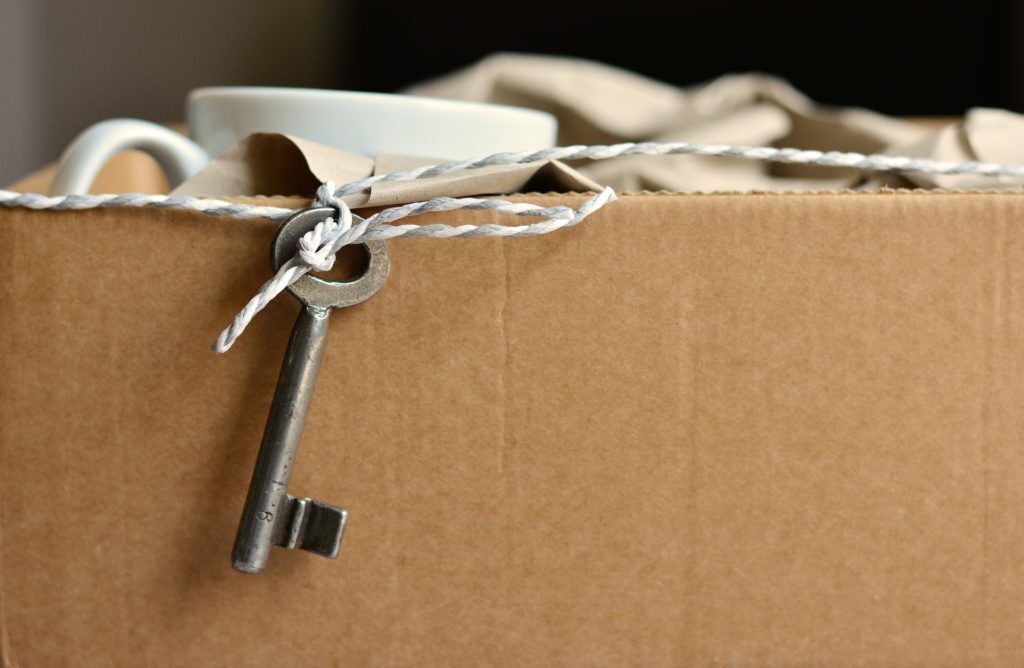How to pack your van?
Our guide to packing & loading
Loading a truck might seem stressful, but with our helpful guide you can be confident in loading your van efficiently to make the best use of the space and avoid the need for multiple trips. Here’s how to optimise the space, avoid breakages, and help make your move as easy as possible.
Large appliances and white goods
The first items to go on board will be your large appliances and whitegoods. These large items will form a foundation for you to pack your belongings around, and are shaped perfectly and sturdy enough for boxes to go on top.
Be sure to completely defrost your refrigerator and drain your washing machine to avoid any unwanted water damage. Once your appliances are loaded onto your truck, carefully wrap them in moving pads and strap them in nice and tight to avoid any movement whatsoever.
Packing boxes
Packing boxes are ideal for getting the best use of the space in your van. After you have loaded your large appliances, next stack your packing boxes evenly from the floor to the ceiling of the van, starting with the heaviest boxes first and using your appliances as a base where necessary. This will not only make efficient use of the space, but will also ensure there is no room for items to shift around during transit.
Large and heavy furniture
Once you have your packing boxes stacked evenly, it’s time to start loading your heavy furniture on board. To avoid wasting space, it’s important to carefully prepare these items for transport with the use of moving pads and packing straps.

Moving Services
For anyone moving overseas, shipping household goods and furniture can seam overwhelming. There are a lot of details to consider when choosing international moving services
How to Move Internationally
No matter where you are moving overseas, the shipping process is moderately similar. Our representatives will work with you through the whole door to door process from one home to the next.
Initial International Moving Advice
Determining how much you want to move internationally is a vital step. Once you know your volume, you will have a better understanding of the services needed. It’s one of the more important questions to ask before an international move and it depends on your budget as well as where you will be living abroad
Overseas Household Shipments Include:
Full households, condo, or apartment in consolidation or sole container
Partial ie. offices, secondary contents(military)
Furniture
Antiques & heirlooms
Anything else you have
How Much Does it Cost to Move Overseas?
After figuring out your volume, you will want to get quotes from international moving companies. As with any relocation, international moving costs are based on multiple factors. These include the type of service, volume of your shipment, origin location, and final destination country.

PLANT MOVING GUIDE
If you carefully following these tips on moving plants, your house plants will be able to travel for up to three days before needing attention.
BEFORE YOUR MOVE
Follow these steps to condition your plants for moving so they can endure changes to their environment without wilting or breaking:
Three weeks before moving day. Re-pot plants from clay pots into shatter-proof plastic pots of the same size.
Two weeks before moving day. Prune larger plants by pinching back newer growth with your thumb and forefinger and removing dead leaves, limbs, and flowers with sharp scissors or gardening shears. Pruning will make the plants compact for easy handling and transport. It will also yield healthy, bushy, attractive plants after your move. Do not prune ferns and succulents (e.g., cactus, jade plants, aloe).
One week before moving day. Check plants for insects and parasites. If you apply insecticides, exercise caution and follow label directions. Pesticides are included on our list of non-allowable items, so have a plan for giving away or disposing of any pesticides before moving.
Two days before moving day. Water your plants normally, taking care to not overwater. Too much water can cause plants to freeze in cold weather or promote fungus growth in warm weather.
MOVING DAY
Prepare by packing your plants the night before or the morning of your move. Here’s how to pack plants for moving:
Wrap. Wrap large plants with an old bed sheet or tissue paper to prevent branches from breaking.
Position. Place each pot in a box so it fits snugly at the bottom. You may use regular moving boxes, like dish packs, available from your Agent.
Pack. If necessary, pack paper in the box around the base of the pot to hold the pot in place. Punch air holes in the sides of the box and loosely fasten the lid so plants can breathe.
Label. Set the boxes upright and clearly mark the top and sides. This will help avoid loading them by mistake into the moving truck.
Control. Keep the temperature in your vehicle at a comfortable level. Cold and hot temperatures can harm your plants.
ONCE YOU’RE HOME
Once you’re in your new home, it’s important to get your plants back in the same condition they were in at your previous home. Here’s how:
Unpack. Unpack your plants as soon as possible. Remove plants through the bottom of the box to prevent breakage.
Place. Place plants back in pots that are the same size as the ones before you moved.
Stabilize. Refrain from moving plants around until they become acclimated.
Heal. If your plant suffers from transplant shock after your move, give it a few days to recover. If your plant still looks unhealthy, follow our tips in “Common household plants and how to care for them.”

Common questions about Packers & Movers
Why should I pay token in advance before the move?
The token is to confirm the slot bookings and avoid any last minute delays or inconvenience. The token amount will be adjusted in the final payment of your quotation.
Why are weekend and month-end prices different?
The quote is calculated based on the availability of slots. Since there is high demand for movement during weekend and month-end, prices are generally high on these days.
Can I reschedule my movement after I have paid the token amount?
You can reschedule your movement by informing your dedicated move manager whose details are included in the confirmation email. Your move manager will reschedule the movement based on the availability of slots
My movement date is not fixed yet. How can I book in advance?
You can notify your dedicated movement manager to reschedule movement upto 2 days before the booked date. Change in movement date is FREE of cost for following categories: weekdays to weekdays, weekend to weekend, weekend to weekdays
Will the movers and packers also dismantle beds and other furniture?
Yes, we can dismantle and assemble beds and other furniture without any extra cost. However, you will have to notify your dedicated move manager before movement.
Guide to Moving House
Moving home can be a long and arduous process, physically, financially and mentally. It can also end up producing a lot of waste and rubbish as you sort through your possessions and decide what you want to take with you on the move. Therefore, to help keep yourself and your possessions in working order, we’ve compiled an easy to follow guide for moving house which will mean you spend less time worrying about what to do and more time simply getting on with it
Who Do I Contact?
Firstly, there will be a lot of people, including companies and organisations who you will want to contact about moving house. This isn’t just important for redirecting mail. Many organisations and databases need to be kept up to date with where you’re living, which can even be a lawful requirement in some cases.
Government Bodies
Department for Work and Pension
DVLA (before moving – as you may need your license for van hire and identification)
Electoral roll
HM Revenue and Customs (HMRC)
Your local authority (regarding your final statement on council tax)
TV licensing
Utility Companies
Gas, electric and water suppliers all need to be contacted when moving house. Tell them the exact date you’re moving and also take meter readings the day you move out.
Health Care Providers
The organisations which you receive healthcare from need to be made aware of your new address. Also, contact your new local NHS doctor’s surgery so that you are registered as soon as possible.



